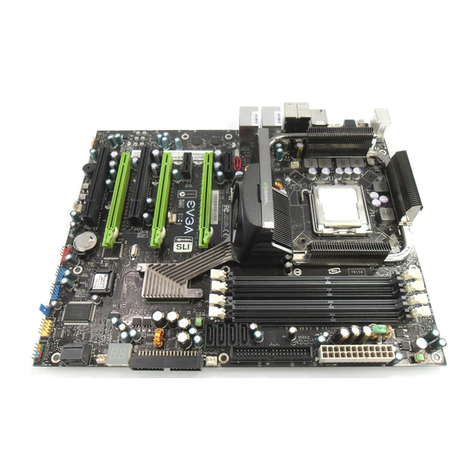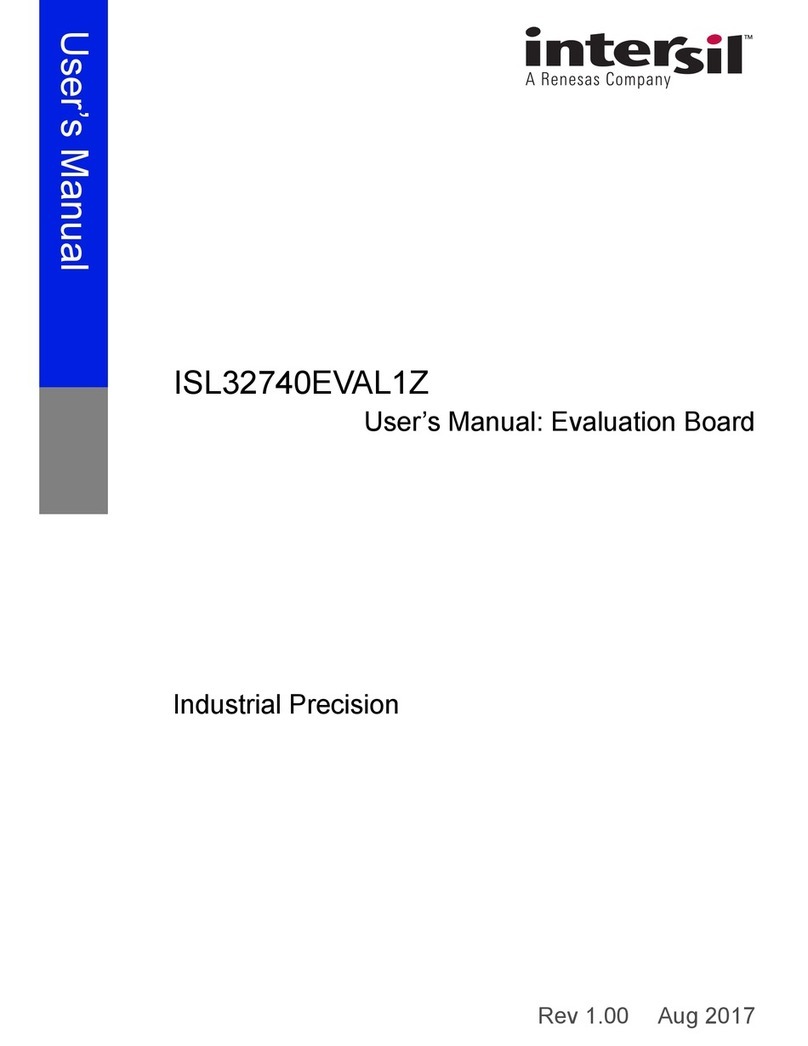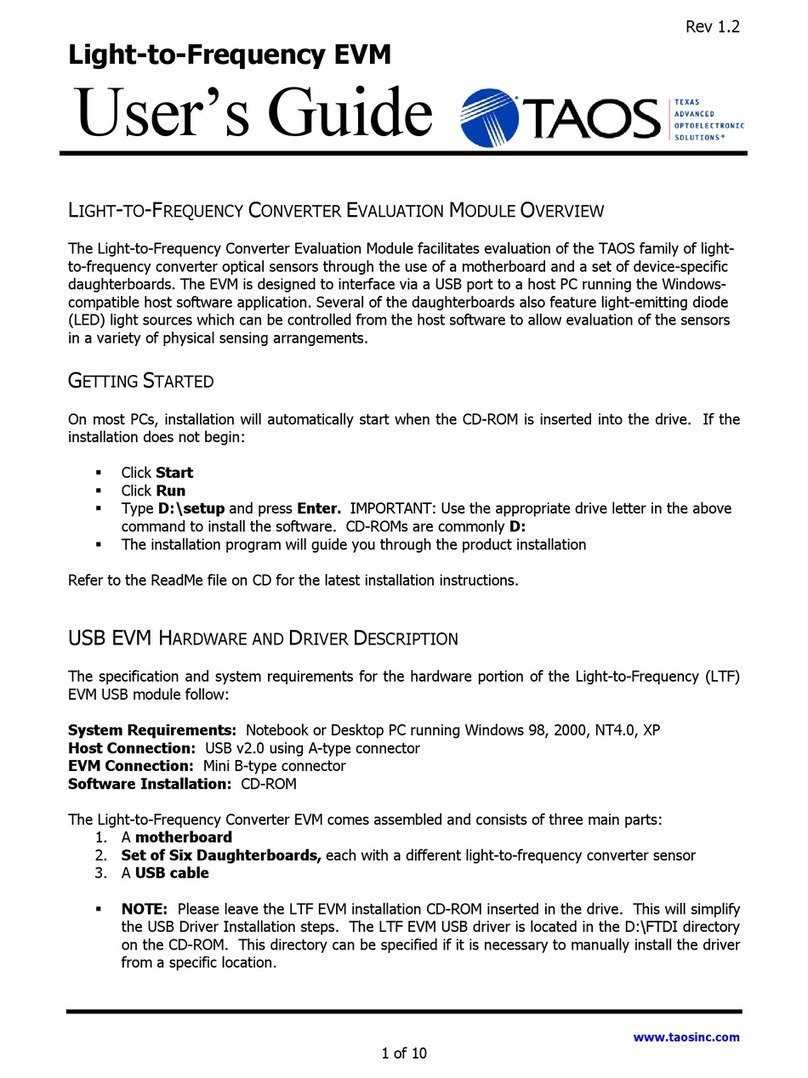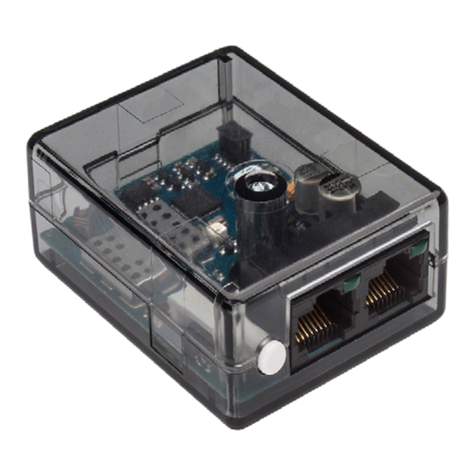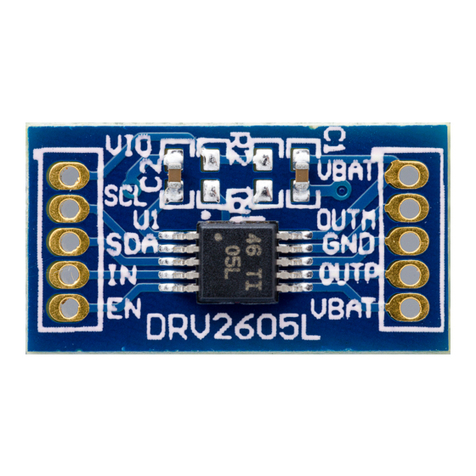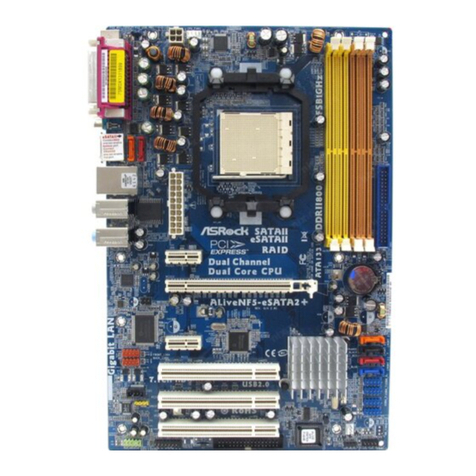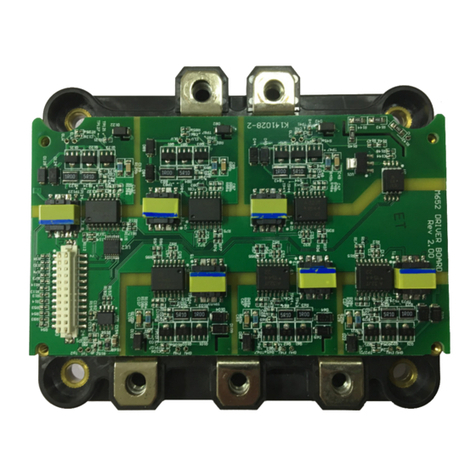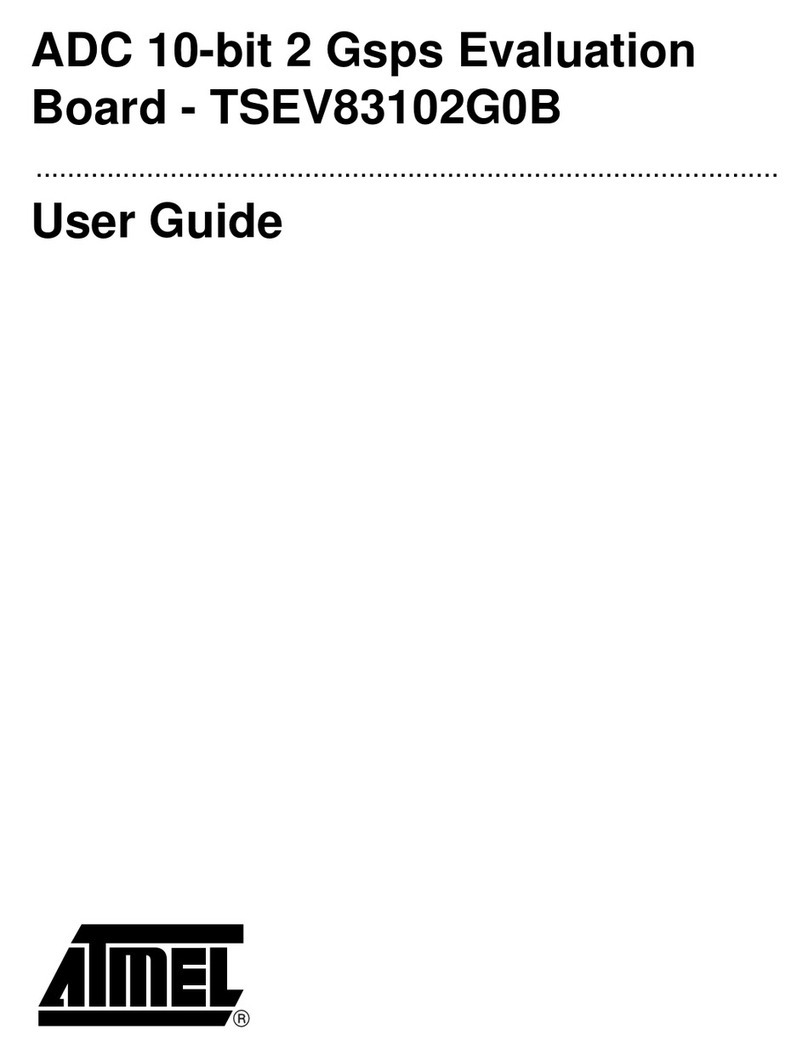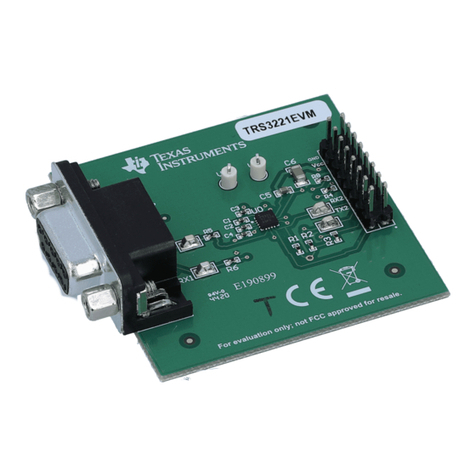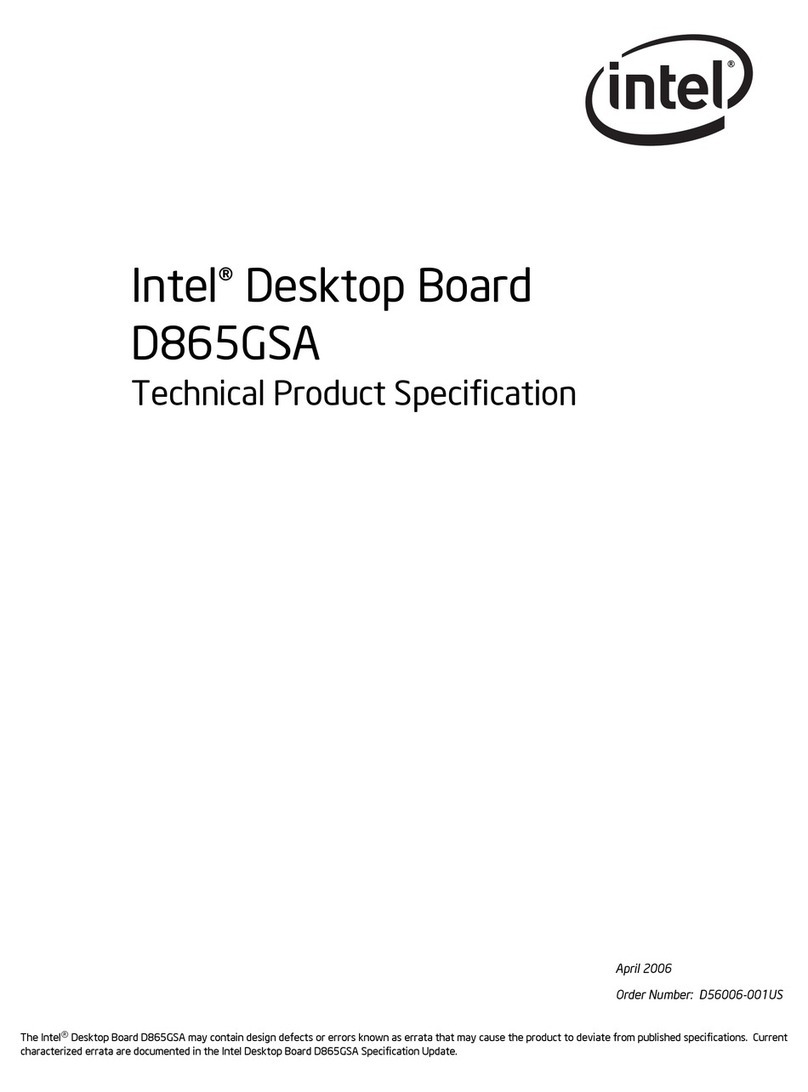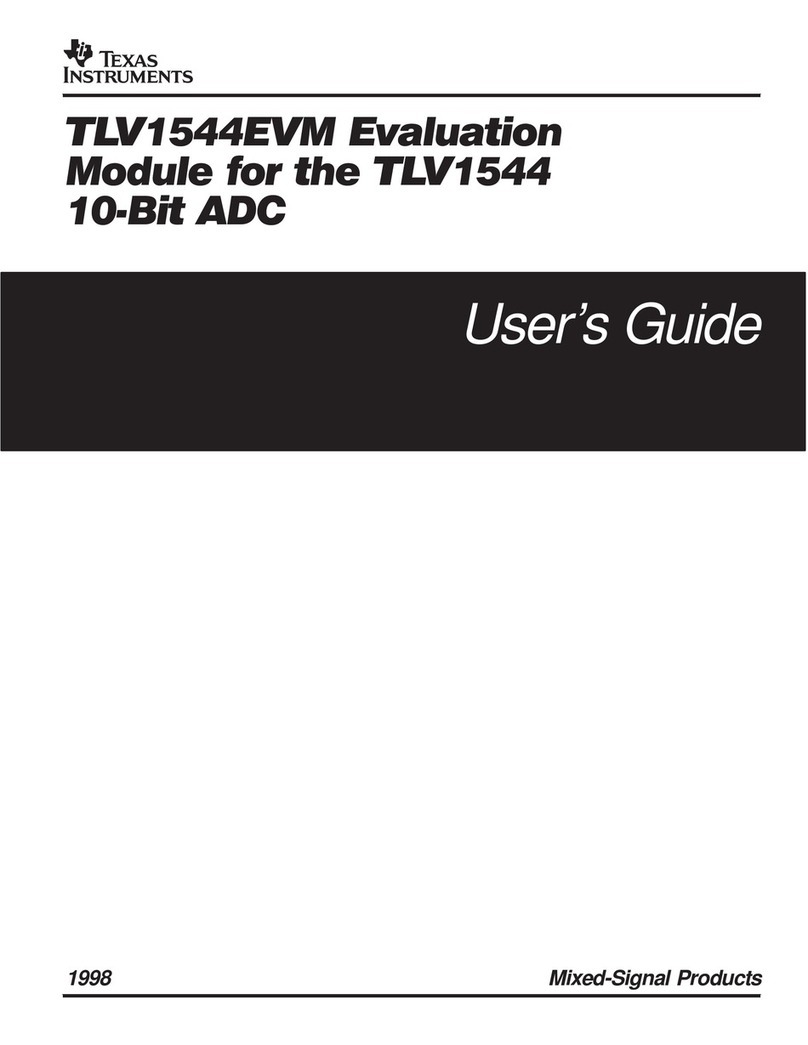Dialog Semiconductor DA1468 series Installation and operating instructions

Company confidential
Application note
DA1468x Application hardware
design guidelines
AN-B-061
Abstract
Minimal reference schematic, circuit explanation and design guidelines for BLE applications based
on the DA14680-01, DA14681-01, DA14682-00 and the DA14683-00 SoCs.

AN-B-061
DA1468x Application hardware design guidelines
Company confidential
Application note
Revision 1.9
28-Mar-2019
CFR0014 Rev 3
2 of 45
© 2019 Dialog Semiconductor
Contents
Abstract................................................................................................................................................ 1
Contents............................................................................................................................................... 2
Figures.................................................................................................................................................. 3
Tables ................................................................................................................................................... 3
1Terms and definitions................................................................................................................... 4
2References..................................................................................................................................... 4
3Introduction.................................................................................................................................... 5
4Device revision numbering and Marking.................................................................................... 6
5Minimal design for the DA1468x SoC.......................................................................................... 7
5.1 Power section of DA1468x.................................................................................................. 12
5.1.1 Supplying external loads...................................................................................... 14
5.1.2 Supply rails discharging....................................................................................... 16
5.1.3 SIMO Buck DC/DC Characteristics ..................................................................... 17
5.2 I/O pins................................................................................................................................ 19
5.3 Crystals and clocks............................................................................................................. 20
5.3.1 16 MHz and 32 MHz clock................................................................................... 20
5.3.2 32.768 KHz clock................................................................................................. 22
5.3.3 Generating a clock output from the DA1468x ..................................................... 24
5.4 UART................................................................................................................................... 25
5.5 SWD (JTAG)....................................................................................................................... 25
5.6 QSPI Flash memory............................................................................................................ 26
5.7 USB and VBUS................................................................................................................... 27
5.7.1 USB ESD measures............................................................................................ 27
5.7.2 VBUS circuitry...................................................................................................... 28
5.8 Hibernation Mode and wakeup ........................................................................................... 30
5.9 RFIO port ............................................................................................................................ 32
5.10 PCB layout .......................................................................................................................... 32
5.10.1 PCB layout for WLCSP53 package..................................................................... 33
5.10.2 PCB layout for AQFN60 package........................................................................ 37
5.11 AQFN60 - Package Outline (POD) Information.................................................................. 39
5.12 WLCSP53 - Package Outline (POD) Information ............................................................... 39
Appendix: AQFN60 assembly and soldering guidelines............................................................... 40
A.1 PCB..................................................................................................................................... 40
A.2 Stencil Design ..................................................................................................................... 41
A.3 Component Placement........................................................................................................ 42
A.4 Reflow Profile...................................................................................................................... 43
Revision history................................................................................................................................. 44

AN-B-061
DA1468x Application hardware design guidelines
Company confidential
Application note
Revision 1.9
28-Mar-2019
CFR0014 Rev 3
3 of 45
© 2019 Dialog Semiconductor
Figures
Figure 1: Block diagram of the DA1468x minimal design ..................................................................... 7
Figure 2: Minimal design for DA14681-01 WLCSP53 package............................................................ 8
Figure 3: Minimal design for DA14681-01 AQFN60 package............................................................... 9
Figure 4: Minimal design for DA14683-00 WLCSP53 package.......................................................... 10
Figure 5: Minimal design for DA14683-00 AQFN60 package............................................................. 11
Figure 6: The power section of the DA1468x...................................................................................... 12
Figure 7: 4.7µF- 6.3V capacitance change for 0402 (purple) and 0603 (blue)................................... 14
Figure 8: DA1468x power management unit block diagram ............................................................... 15
Figure 9: V14, V18, V18P rails discharging by HW Reset.................................................................. 16
Figure 10: Discharging rails FSM timing ............................................................................................. 16
Figure 11: SIMO BUCK DC/DC Block Diagram.................................................................................. 17
Figure 12: PAD I/O configuration ........................................................................................................ 19
Figure 13: 16 MHz or 32 MHz crystal oscillator, recommended operating conditions........................ 21
Figure 14: Connection of the crystal (left) and external 16 MHz clock (right) for AQFN package ...... 21
Figure 15: 32.768 KHz crystal oscillator, recommended operating conditions ................................... 23
Figure 16: Clock output, P10_MODE_REG - PUPD and PID selection ............................................. 25
Figure 17: Clock output, GPIO_CLK_SEL - FUNC_CLK_SEL, clock selection.................................. 25
Figure 18: Recommended topology for USB functionality .................................................................. 27
Figure 19: Relation between damping and step-response of a series LC resonator.......................... 28
Figure 20: used USB circuit for testing................................................................................................ 28
Figure 21: Step response with 60 cm (left) and 150 cm (right) cable (non USB-cable). A damping
network of 0.39 Ω and 10 μF capacitor on VBUS is used................................................................... 29
Figure 22: Step response with 300 cm cable (non USB-cable) and the same damping network as
above (0.39 Ω and 10 μF capacitor on VBUS).................................................................................... 29
Figure 23: Step response of VBUS with 0.39 Ωand 10 μF for a 1.5 m USB cable............................ 30
Figure 24: Wakeup from Hibernation by VBUS voltage using GPIO trigger....................................... 31
Figure 25: GPIO set as Input (no pull)................................................................................................. 31
Figure 26: RF matching circuit must be placed as close as possible to the antenna ........................ 32
Figure 27: WLCSP53 PCB stackup..................................................................................................... 33
Figure 28: WLCSP53 PCB layout, top side......................................................................................... 34
Figure 29: WLCSP53 PCB layout, layer 2........................................................................................... 35
Figure 30: WLCSP53 PCB layout, layer 3, reference GND ................................................................ 35
Figure 31: Ground connectivity Top (left) and layer 2 (right)............................................................... 36
Figure 32: AQFN60 PCB stackup ....................................................................................................... 37
Figure 33: AQFN60 PCB layout, top layer .......................................................................................... 38
Figure 34: AQFN60 PCB layout, layer2, reference ground................................................................. 39
Figure 35: PCB footprint data.............................................................................................................. 40
Figure 36: Recommend of stencil opening of thermal......................................................................... 42
Figure 37: Reflow profile for solder paste SAC305............................................................................. 43
Tables
Table 1: DA14680/14682 and DA14681/14683 chip options................................................................ 5
Table 2 CHIP_REVISION_REG (0x50003204)..................................................................................... 6
Table 3 CHIP_TEST1_REG (Minor revision)........................................................................................ 6
Table 4 Chip revision numbering........................................................................................................... 6
Table 5: Suggested decoupling capacitors for the power section....................................................... 13
Table 6: SIMO DC/DC inductor examples and characteristics ........................................................... 13
Table 7: DA1468x supply rail capabilities overview ............................................................................ 15
Table 8: 16 MHz crystal examples and characteristics....................................................................... 22
Table 9: 32 MHz crystal examples and characteristics....................................................................... 22
Table 10: 32.768 KHz crystal examples and characteristics............................................................... 23
Table 11: Default UART pins............................................................................................................... 25
Table 12: JTAG pins............................................................................................................................ 25

AN-B-061
DA1468x Application hardware design guidelines
Company confidential
Application note
Revision 1.9
28-Mar-2019
CFR0014 Rev 3
4 of 45
© 2019 Dialog Semiconductor
1 Terms and definitions
AQFN Advanced Quad-Flat No-leads (package)
BLE Bluetooth Low Energy
BUCK Type of DC/DC converter
CCCV Constant Current Constant Voltage (battery charger type in the DA1468x)
CS Chip Select
DC/DC DC-to-DC Converter
DK Development Kit
FTDI Brand name of USB –UART interface
GPIO General Purpose Input Output
OTP One Time Programmable
PCB printed circuit board
PTH Plated Thru Hole
SDK Software Development Kit
SPI Serial Peripheral Interface
SRAM Static Random Access Memory
SWD Serial Wire Debug
USB Universal Serial Bus
UART Universal Asynchronous Receiver/Transceiver
WLCSP Wafer Level Chip Scale Package
2 References
[1] DA14680-01, DA14681-01, DA14682-00, DA14683-00 Datasheet, Dialog Semiconductor.
[2] DA1468x Pro-Development Kit, Dialog Semiconductor.
[3] AN-B-056 - DA14680_681 Recovery from System Level ESD Events, Dialog Semiconductor.
[4] AN-B-45 - DA1468x Booting from serial interfaces, Dialog Semiconductor.

AN-B-061
DA1468x Application hardware design guidelines
Company confidential
Application note
Revision 1.9
28-Mar-2019
CFR0014 Rev 3
5 of 45
© 2019 Dialog Semiconductor
3 Introduction
The DA1468x family are flexible System-on-Chips combining an application processor, memories,
cryptography engine, power management unit, digital and analog peripherals and a Bluetooth® Smart
MAC engine and radio transceiver. The chips are based on an ARM® Cortex®-M0 CPU delivering up
to 84 DMIPS and provides a flexible memory architecture, enabling code execution from embedded
memory (RAM, ROM) or non-volatile memory (FLASH, OTP).
For the DA14680/682, a QSPI flash of 8Mbit capacity is embedded in the package, whereas for the
DA14681/683 the QSPI flash is resided externally and it is connected to the chip with the QSPI bus.
There are two available packages for the DA14681 and DA14683: WLCSP53 and AQFN60.
And one package is available for the DA14680 and DA14682 having the embedded QSPI Flash:
AQFN60.
Table 1: DA14680/14682 and DA14681/14683 chip options
Chip
package
No of pins
QSPI Flash
DA14680/682
AQFN60
60
8Mbit embedded
DA14681/683
WLCSP53
53
External
QSPI flash
AQFN60
60
The purpose of this document is to present the absolute necessary circuit required for proper operation
of DA1468x. Based on this, system designers can build a BLE application on the top of it.
Recommended schematic, chip interfaces and surrounding components as well as PCB layout
guidelines of the DA1468x SoC family are provided.

AN-B-061
DA1468x Application hardware design guidelines
Company confidential
Application note
Revision 1.9
28-Mar-2019
CFR0014 Rev 3
6 of 45
© 2019 Dialog Semiconductor
4 Device revision numbering and Marking
The revision number of the chip can be read from the device by reading below ARM registers (Table 2
and Table 3). The combination of this will explain the commercial chip revision (Table 4)
Table 2 CHIP_REVISION_REG (0x50003204)
Bit
Mode
Symbol
Description
Reset
7:0
R
REVISION_ID
Chip version, corresponds with type number in ASCII.
0x41 = ‘A’, 0x42 = ‘B’.
-
Table 3 CHIP_TEST1_REG (Minor revision)
Bit
Mode
Symbol
Description
Reset
7:0
R
MINOR
0x00 = ‘A’, . . . . . ., 0x03 = ’D’, 0x07 = ‘E’.
-
The chip’s commercial version number can be read from Table 4, below:
Table 4 Chip revision numbering
Commercial number
CHIP_REVISION_REG
(0x50003204)
CHIP_TEST1_REG
(0x5000320A)
DA14680-01/681-01
DA14682-00/683-00
0x41 (A)
0x42 (B)
0x07 (E)
0x01 (B)
Version format: xx = commercial chip revision: ‘00’ or ‘01’.
Date code format: yy = Year, ww = Week, nnnn = Dialog internal number
x x 0 0 0
y y w w n n n n

AN-B-061
DA1468x Application hardware design guidelines
Company confidential
Application note
Revision 1.9
28-Mar-2019
CFR0014 Rev 3
7 of 45
© 2019 Dialog Semiconductor
5 Minimal design for the DA1468x SoC
The DA1468x SoC requires a minimum number of external components for proper operation.
These are a 16MHz crystal, a DCDC inductor and a number of supply rail decoupling caps.
The absolute necessary sections required for a minimal system operation are the Power section,
Crystals, UART, JTAG, Flash memory and Radio section.
The external QSPI flash memory chip is only required for the DA14681 and DA14683, which do not
have an embedded flash memory.
A 32MHz crystal is only supported by the DA14682 and the DA14683. 16 MHz crystal operation is
supported by all types.
The 32.768 KHz crystal is optional, alternatively the internal accurate RCX oscillator can be used as
sleep clock.
Below are the block diagram and minimal schematics for the two packages AQFN60 and WLCSP53.
Only the schematics for the DA14681 and DA14683 are given, the DA14680 and DA14682
schematics are identical except for not having the external QSPI flash chip.
Please be aware that the DA14680 and DA14682 QSPI signals are not available externally since
these pins are not bonded out. Hence the 10K pull-up resistor on the DA14680’s and DA14682’s /CS
(P0_5) pin can be omitted as well. This 10K pull-up resistor is R3 in the schematics.
Please note that the VDDIO pin, for the interface supply voltage of the embedded QSPI flash, still
needs to be connected to V18, the 1.8V supply rail for the internal QSPI flash.
DA1468x
matching
QSPI
Flash*
USB
UART
JTAG
GPIOs
16/32 MHz 32.768 KHz (optional)
Vusb
Power
Battery
Antenna
* Not needed for DA14680/682
Figure 1: Block diagram of the DA1468x minimal design

AN-B-061
DA1468x Application hardware design guidelines
Company confidential
Application note
Revision 1.9
28-Mar-2019
CFR0014 Rev 3
8 of 45
© 2019 Dialog Semiconductor
Figure 2: Minimal design for DA14681-01 WLCSP53 package
VBAT+
VBAT-
RST
Z1
TBD
Z2 10pF
C1
1.0uF C3
4.7uF
C2
4.7uF
VDDIO V33
R1
0.1
U1
DA14681_WLCSP53
ADC3/P0_7
A6
QSPI_D3/P0_4
C8
LY F7
USBN/P1_1 F3
RST
G1
SWDIO/ADC4/P0_6
F4
RFIOp A4
QSPI_D2/P0_3
A8
SOCN E3
QSPI_CS/P0_5
C7
VBAT2 F6
QSPI_VDDIO D7
V12 E7
XTAL_32Kp/P2_0 E1
XTAL_32Km/P2_1 F1
XTAL16Mm A1
XTAL16Mp B1
SOCP F2
V14_RF A2
VDD1V8P F8
LX G8
VDD1V8 E8
V14 D8
QSPI_D1/P0_2
B7 QSPI_D0/P0_1
A7 QSPI_CLK/P0_0
B8
VBUS G5
LED1 G2
USBP/P2_2 G3
V33 G4
VBAT1 G6
ADC0/P1_2
C1 ADC5/P1_0
C2
ADC2/P1_3
B6
ADC1/P1_4
D1
ADC6/P1_5
B2
NTC/P1_6
E2
P1_7
D2
P2_3
B5
SWCLK/ADC7/P2_4
F5
RFIOm A3
ESDN
A5
PSUB_RF
B4
GND_RF1
D3
GND_RF2
C3
GND_AVS1
D4
GND_VSS1
C6
GND_VSS2
D5
VSSIOQ
D6
GND_BUCK
G7
VSSIO1
E6
VSSIO2
E5
GND_AVS2
E4
Y1
16MHz
ANT1
IFA_type
C6
4.7uF C7
4.7uF
V12
SWDIO_P0_6
C8
4.7uF
C5
10uF
C4
10uF
FL_CS
V18PV18
FL_D0
FL_D3
FL_D2
FL_D1
FL_CLK
U3
W25Q80EW
VCC A1
/CS
A2
/HOLD B1
DO
B2
CLK C1
/WP
C2
DI D1
GND
D2
FL_D3
QUAD SPI FLASH
FL_D0
FL_CLK
R3
10.0k
VDDIO
C9
100nF
FL_D2
FL_D1
FL_CS
VDDIO
Y2
32.768KHZ R2
10MOhm
URX
UTX
J17
Battery
connector
C10
1uF
C11
1uF
V14
VBUS
R5
0.56
VDDIO
V18
R6 0
L1
470nH
SWCLK_P2_4
SOCn
SOCp
LED1
X16p
X16m
Z3
TBD

AN-B-061
DA1468x Application hardware design guidelines
Company confidential
Application note
Revision 1.9
28-Mar-2019
CFR0014 Rev 3
9 of 45
© 2019 Dialog Semiconductor
Figure 3: Minimal design for DA14681-01 AQFN60 package
Note: for the DA14680-01 (embedded flash), U2, R3, C12 are not present. And P0_0~P0_5 are N.C.
URX
SWDIO_P0_6
SOCp
X16m
X16p
SOCn
RST
SWCLK_P2_4
UTX
C1
1.0uF
L1
470nH
C2
10uF
C11
1.0uF
Z3
TBD
C4
10uF C7
4.7uF
ANT1
IFA_type
Y1
16MHz
C8
4.7uF J17
U1
DA14681_aQFN60
ADC3/P0_7
A34
QSPI_D3/P0_4
A4
LY B5
USBN/P1_1 A17
RST
A21
SWDIO/ADC4/P0_6
B8
RFIOp B20
QSPI_D2/P0_3
A1
SOCN B9
QSPI_CS/P0_5
A5
VBAT2 B6
QSPI_VDDIO B2
V12 B3
XTAL_32Kp/P2_0 A23
XTAL_32Km/P2_1 B13
XTAL16Mm A29
XTAL16Mp A30
SOCP A18
V14_RF B18
VDD1V8P B4
LX A11
VDD1V8 A8
V14 A6
QSPI_D1/P0_2
A3 QSPI_D0/P0_1
A2 QSPI_CLK/P0_0
B1
VBUS B7
LED1 B10
USBP/P2_2 A16
V33 A15
VBAT1 A13
ADC0/P1_2
A27 ADC5/P1_0
B15
ADC2/P1_3
B23
ADC1/P1_4
A26
ADC6/P1_5
A28
NTC/P1_6
B12
P1_7
A25
P2_3
A35
P3_0
A37
P3_1
A12
P3_4
A9
P3_5
A20
P3_6
A22
P3_7
B14
P4_0
A24
P4_1
B16
P4_2
B17
P4_3
A31
P4_4
A32
P4_5
A33
P4_6
B22
P4_7
A36
P3_2
A10
P3_3
A7
LED2 A19
LED3 B11
SWCLK/ADC7/P2_4
A14
RFIOm B19
GND
PAD
ESDN
B21
Y2
32.768KHZ
C6
4.7uF
C5
10uF
Z2 10pF
R4 0
C3
4.7uF
Z1
TBD
R5
0.56
R2
10MOhm
R1
0.1
C10
1.0uF
V33
VDDIO
VBUS
V12V18PV18 VBAT+
VBAT-
V18
V14
Battery
connector
VDDIO
FL_CLK
FL_CS
FL_D0
FL_D3
FL_D2
FL_D1
U2
W25Q80EW
VCC A1
/CS
A2
/HOLD B1
DO
B2
CLK C1
/WP
C2
DI D1
GND
D2 FL_D0
FL_CLK
FL_D3
R3
10.0k
QUAD SPI FLASH
C12
100nF
VDDIO
FL_CS
VDDIO
FL_D2
FL_D1

AN-B-061
DA1468x Application hardware design guidelines
Company confidential
Application note
Revision 1.9
28-Mar-2019
CFR0014 Rev 3
10 of 45
© 2019 Dialog Semiconductor
DA14683_WLCSP53
Figure 4: Minimal design for DA14683-00 WLCSP53 package
VBAT+
VBAT-
RST
Z1
TBD
Z2 10pF
C1
1.0uF C3
4.7uF
C2
4.7uF
VDDIO V33
R1
0.1
U1
DA14681_WLCSP53
ADC3/P0_7
A6
QSPI_D3/P0_4
C8
LY F7
USBN/P1_1 F3
RST
G1
SWDIO/ADC4/P0_6
F4
RFIOp A4
QSPI_D2/P0_3
A8
SOCN E3
QSPI_CS/P0_5
C7
VBAT2 F6
QSPI_VDDIO D7
V12 E7
XTAL_32Kp/P2_0 E1
XTAL_32Km/P2_1 F1
XTAL16Mm A1
XTAL16Mp B1
SOCP F2
V14_RF A2
VDD1V8P F8
LX G8
VDD1V8 E8
V14 D8
QSPI_D1/P0_2
B7 QSPI_D0/P0_1
A7 QSPI_CLK/P0_0
B8
VBUS G5
LED1 G2
USBP/P2_2 G3
V33 G4
VBAT1 G6
ADC0/P1_2
C1 ADC5/P1_0
C2
ADC2/P1_3
B6
ADC1/P1_4
D1
ADC6/P1_5
B2
NTC/P1_6
E2
P1_7
D2
P2_3
B5
SWCLK/ADC7/P2_4
F5
RFIOm A3
ESDN
A5
PSUB_RF
B4
GND_RF1
D3
GND_RF2
C3
GND_AVS1
D4
GND_VSS1
C6
GND_VSS2
D5
VSSIOQ
D6
GND_BUCK
G7
VSSIO1
E6
VSSIO2
E5
GND_AVS2
E4
Y1
16MHz
ANT1
IFA_type
C6
4.7uF C7
4.7uF
V12
SWDIO_P0_6
C8
4.7uF
C5
10uF
C4
10uF
FL_CS
V18PV18
FL_D0
FL_D3
FL_D2
FL_D1
FL_CLK
U3
W25Q80EW
VCC A1
/CS
A2
/HOLD B1
DO
B2
CLK C1
/WP
C2
DI D1
GND
D2
FL_D3
QUAD SPI FLASH
FL_D0
FL_CLK
R3
10.0k
VDDIO
C9
100nF
FL_D2
FL_D1
FL_CS
VDDIO
Y2
32.768KHZ R2
10MOhm
URX
UTX
J17
Battery
connector
C10
1uF
C11
1uF
V14
VBUS
R5
0.56
VDDIO
V18
R6 0
L1
470nH
SWCLK_P2_4
SOCn
SOCp
LED1
X16p
X16m
Z3
TBD

AN-B-061
DA1468x Application hardware design guidelines
Company confidential
Application note
Revision 1.9
28-Mar-2019
CFR0014 Rev 3
11 of 45
© 2019 Dialog Semiconductor
DA14683_aQFN60
Figure 5: Minimal design for DA14683-00 AQFN60 package
Note: for the DA14682-01 (embedded flash), U2, R3, C12 are not present. And P0_0~P0_5 are N.C.
URX
SWDIO_P0_6
SOCp
X16m
X16p
SOCn
RST
SWCLK_P2_4
UTX
C1
1.0uF
L1
470nH
C2
10uF
C11
1.0uF
Z3
TBD
C4
10uF C7
4.7uF
ANT1
IFA_type
Y1
16MHz
C8
4.7uF J17
U1
DA14681_aQFN60
ADC3/P0_7
A34
QSPI_D3/P0_4
A4
LY B5
USBN/P1_1 A17
RST
A21
SWDIO/ADC4/P0_6
B8
RFIOp B20
QSPI_D2/P0_3
A1
SOCN B9
QSPI_CS/P0_5
A5
VBAT2 B6
QSPI_VDDIO B2
V12 B3
XTAL_32Kp/P2_0 A23
XTAL_32Km/P2_1 B13
XTAL16Mm A29
XTAL16Mp A30
SOCP A18
V14_RF B18
VDD1V8P B4
LX A11
VDD1V8 A8
V14 A6
QSPI_D1/P0_2
A3 QSPI_D0/P0_1
A2 QSPI_CLK/P0_0
B1
VBUS B7
LED1 B10
USBP/P2_2 A16
V33 A15
VBAT1 A13
ADC0/P1_2
A27 ADC5/P1_0
B15
ADC2/P1_3
B23
ADC1/P1_4
A26
ADC6/P1_5
A28
NTC/P1_6
B12
P1_7
A25
P2_3
A35
P3_0
A37
P3_1
A12
P3_4
A9
P3_5
A20
P3_6
A22
P3_7
B14
P4_0
A24
P4_1
B16
P4_2
B17
P4_3
A31
P4_4
A32
P4_5
A33
P4_6
B22
P4_7
A36
P3_2
A10
P3_3
A7
LED2 A19
LED3 B11
SWCLK/ADC7/P2_4
A14
RFIOm B19
GND
PAD
ESDN
B21
Y2
32.768KHZ
C6
4.7uF
C5
10uF
Z2 10pF
R4 0
C3
4.7uF
Z1
TBD
R5
0.56
R2
10MOhm
R1
0.1
C10
1.0uF
V33
VDDIO
VBUS
V12V18PV18 VBAT+
VBAT-
V18
V14
Battery
connector
VDDIO
FL_CLK
FL_CS
FL_D0
FL_D3
FL_D2
FL_D1
U2
W25Q80EW
VCC A1
/CS
A2
/HOLD B1
DO
B2
CLK C1
/WP
C2
DI D1
GND
D2 FL_D0
FL_CLK
FL_D3
R3
10.0k
QUAD SPI FLASH
C12
100nF
VDDIO
FL_CS
VDDIO
FL_D2
FL_D1

AN-B-061
DA1468x Application hardware design guidelines
Company confidential
Application note
Revision 1.9
28-Mar-2019
CFR0014 Rev 3
12 of 45
© 2019 Dialog Semiconductor
5.1 Power section of DA1468x
The DA1468x is supplied from a power source or battery connected to pin VBAT1 and VBAT2. The
battery charging is accomplished by connecting an external +5V supply on the VBUS pin. The charging
procedure is implemented in the software. When the +5V supply is connected, the DA1468x system
operates with or without battery presence. The VBUS voltage range: 4.2V min. and 5.75V max.
The DA1468x SoC contains internally all power management for proper and safe system operation.
Below the required external components are shown:
Figure 6: The power section of the DA1468x
VBUS: is the battery CCCV charger input as well as the USB bus voltage. It also supplies the 3.3V
USB LDO providing power to the V33 rail. A decoupling capacitor equal to or less than 10 µF must be
placed close to the VBUS pin. The absolute maximum allowed voltage for this pin is 6.5V.
It strongly advised to apply a 4.7 µF - 10V decoupling capacitor (C2: 0402 package) in combination
with a 0.56 Ohm resistor (R5) in series with the VBUS pin. An alternative combination would be a 10
µF - 10V capacitor and a 0.39 Ohm resistor in series. Please refer to section 5.7.2.
VBAT1: the battery is connected to this pin and supplies the 3.3V VBAT LDO. A minimum value of 1µF
for the decoupling capacitor (C10), is required close to the pin (0402 package, 10V). The voltage range
for VBAT1 is 1.7V to 4.75V. The absolute maximum allowed voltage for this pin is 6V.
VBAT2: is the input supply pin for the SIMO DCDC converter. It is connected externally to VBAT1.
As minimum, a 1 µF decoupling capacitor (C11), is required nearby the pin (0402 package, 10V).
V33: the 3.3V LDO output rail. Supplied by the VBAT1 or the VBUS pin. A ceramic decoupling capacitor
of 4.7 µF (C3), should be added (0402 package, 6.3V). The V33 LDOs are capable to deliver up to 100
mA in active mode and up to 3 mA (DA14680/681) or 10 mA (DA14682/683) in sleep mode. The V33
rail cannot be turned off (it’s required for e.g. the bandgap reference).
SIMO DC/DC converter outputs when active are: V18P, V18, V14 and V12. The inductor needed for
DCDC operation is connected externally. The low RDC inductor (L1) of 470nH, size 0805 is connected
to the LX/ LY pins.
V18 & V18P: these supply rails can deliver power to external devices, even when the system is in
sleep mode. Decoupling ceramic capacitors (C4 & C5) of 10µF (0603 package, 16V) must be placed
as close as possible to the V18 and V18P pins.
The V18 (VDD1V8) rail is assigned to supply the external QSPI Flash memory.
The V18P (VDD1V8P) rail is assigned to be used for supplying external devices like sensors or a RF
power amplifier. The V18P supply rail is also used to supply the GPIOs when these are set to use the

AN-B-061
DA1468x Application hardware design guidelines
Company confidential
Application note
Revision 1.9
28-Mar-2019
CFR0014 Rev 3
13 of 45
© 2019 Dialog Semiconductor
1.8V supply. The current delivery capability of the V18 and V18P’s rails in active mode is 75mA,
whereas in sleep mode it is 3 mA (DA14680/681) or 10 mA (DA14682/683).
Please note that when not used, the V18 and V18P supply rails can be switched off completely.
V12: this power rail supplies the digital core of the DA1468x and delivers up to 50 mA at 1.2 V when
in active mode. This rail should not be used for supplying external devices. A 4.7µF decoupling
capacitor (C6), is required (0402 package, 10V).
V14: this output rail delivers up to 20 mA at 1.4V and should not be used for supplying other devices.
A 4.7µF decoupling capacitor (C7), is required to be placed close to the V14 pin (0402 size, 10V).
V14_RF: the BLE radio supply input pin. It is connected to the V14 rail. The V14_RF supplies the
internal RF circuits via a number of dedicated internal 1.2V LDOs. A 4.7µF decoupling capacitor
(C8), is required, and should be placed as close to the V14_RF pin as possible. A good decoupling of
this RF supply is important for a good and stable RF-performance (0402 package, 10V).
VDDIO: the Flash QSPI interface supply voltage. It connects to the supply rail used by the flash,
normally V18. For the SoCs having the embedded flash memory, the VDDIO pin must be connected
to V18. A 1µF decoupling capacitor (C1), needs to be placed at this pin (0402 package, 6.3V).
Note: The DA14682/683 chips have the capability to discharge both 1.8V rails and the 1.4V rail by a
HW-Reset or by SW. Please refer to Section 5.1.2 or to the DA14682/683 datasheet [1] for details.
Table 5: Suggested decoupling capacitors for the power section
Reference Description Value Package Manufacturer Part Number
C1
CAP CER 6.3V 10%
X5R
1.0 µF 0402 muRata GRM155R60J105KE19
C10, C11 CAP CER 10V 10%
X5R 1.0 µF 0402 muRata GRM155R61A105KE5J
C3
CAP CER 6.3V 20%
X5R
4.7 µF 0402 muRata GRM155R60J475ME47
C2, C6, C7, C8
CAP CER 10V 20%
X5R
4.7 µF 0402
muRata ZRB15XR61A475ME01
or GRM155R61A475MEAA
C4, C5 CAP CER 16V 20%
X5R 10 µF 0603 muRata GRM188R61C106MA73
Note: please consider 0603 size for C2, C10 and C11 for larger effective capacitance at 5V or 4V.
Table 6: SIMO DC/DC inductor examples and characteristics
Part Number
Taiyo Yuden
CKP2012NR47M-T
Taiyo Yuden
BRL2012TR47M6
SunLord
MPM201206SR47
muRata
DFE160808S-R47
Value 0.47 µH 0.47 µH 0.47 µH 0.47 µH
DC Resistance RDC 0.08 Ω max 0.063 Ω max 0.086 Ω max 0.064 Ω max
Saturation Current 1.2 A 1.5 A 2.0 A 2.4 A
Size L x W xH (mm) 2.0 x 1.2 x 1.0 2.0 x 1.25 x 1.0 2.0 x 1.2 x 0.6 1.6 x 0.8 x 0.8

AN-B-061
DA1468x Application hardware design guidelines
Company confidential
Application note
Revision 1.9
28-Mar-2019
CFR0014 Rev 3
14 of 45
© 2019 Dialog Semiconductor
A 470nH power inductor is used for the SIMO DCDC converter. The DC resistance affects the
efficiency as well as the ripple of the DCDC converter outputs. An inductor having a saturation current
of at least 1A and a RDC of maximum 0.1 Ohm guarantees a good performance. For the PRO-
development kit, an inductor with saturation current of 1.2A and DC resistance of 0.06 Ohm is used.
The ceramic capacitors are placed as close as possible to the pins of the chip for reducing the
parasitic inductance and improving the performance. Where it is available a small package (0402)
was used. The capacitor values and working voltages have been selected for covering the
capacitance de-rating phenomenon when a DC bias voltage is applied on the ceramic capacitor.
The capacitance de-rating is highly dependent on the rated voltage, the technology (e.g. X5R vs.
X7R) and the size of the multi-layer ceramic capacitor. In Figure 7, the capacitance de-rating for two
different packages 0402 and 0603 of a 4.7µF/6.3V/X5R ceramic capacitor of Murata are presented.
Quite a similar difference can be seen for 0402 sized 4.7µF/X5R capacitors, but having a rated
voltage of 6.3V or 10V: the capacitance values at 5V are respectively 1µF and 2µF. To compensate
or reduce the negative effect of this DC-bias derating, it is advised to either apply a larger size (0603
instead of 0402), a type having a higher rated voltage, e.g. 10V instead of 6.3V, or just a larger value.
Figure 7: 4.7µF- 6.3V capacitance change for 0402 (purple) and 0603 (blue)
5.1.1 Supplying external loads
There are different ways to supply external loads from the DA1468x- SoC :
- V33 power rail. The V33 voltage is generated from VBUS or VBAT using the internal 3.3V LDOs.
External loads up to 100 mA can be supplied by the V33 supply in active mode.
The current capability of the V33 rail in sleep mode is 10 mA (DA14682/683).
For the DA14680/681, the V33 rail current capability during sleep is less: 3mA.
- V18 and V18P power rail: the V18 (VDD1V8) rail is used for supplying the QSPI flash memory.
The V18P (VDD1V8P) rail is used to supply peripherals like sensors.
The current capability of these rails is 75 mA in active mode and 10 mA in sleep mode.
With the DA14680/681 chips, the current capability of the two 1.8V rails during sleep is 3 mA.
- The GPIOs supply-rail can be configured to 1.8V or 3.3V. When set to 1.8V, the GPIO is supplied
from V18P, VDD1V8P. Whereas for 3.3V it is supplied from the 3.3V LDO, V33. Refer to Figure 8.

AN-B-061
DA1468x Application hardware design guidelines
Company confidential
Application note
Revision 1.9
28-Mar-2019
CFR0014 Rev 3
15 of 45
© 2019 Dialog Semiconductor
The GPIO’s output current capability is 4.8 mA. The GPIO supply power delivered to the load
needs to be taken into consideration into the power budget of the total system. The GPIOs can be
used for supplying light loads, e.g. a LED, NTC resistor network or a low-power sensor. The
maximum source or sink current per GPIO is 4.8 mA. The system designer must take into
consideration the current capability of the voltage rails that supplies the GPIOs during sleep mode.
Figure 8: DA1468x power management unit block diagram
Table 7: DA1468x supply rail capabilities overview
Supply rails
DA14680/681
DA14682/683
V18 / V18P active
75 mA
75 mA
V18 / V18P sleep
3 mA
10 mA
V33 active
100 mA
100 mA
V33 sleep
3 mA
10 mA
Always on
Software Enabled
Hardware enabled

AN-B-061
DA1468x Application hardware design guidelines
Company confidential
Application note
Revision 1.9
28-Mar-2019
CFR0014 Rev 3
16 of 45
© 2019 Dialog Semiconductor
5.1.2 Supply rails discharging
Device:
DA14680
DA14681
DA14682
DA14683
Rail discharging
✗
✗
✓
✓
The DA14682/683 chips have the capability to discharge both 1.8V rails and the 1.4V rail by a HW-
Reset (PMU_RESET_RAIL_REG) or by SW (DISCHARGE_RAIL_REG). The DA14680/681 chips
don’t possess this function.
Below Figure 9 shows the rails being discharged by a HW-Reset. The whole discharge –charge
cycle takes about 4 msec. Figure 10 shows the FSM timing diagram. For details about the rail
discharging functionality, please refer to the ‘Rails Discharging’ section of the ‘Reset and BOD’
chapter in the DA14682 and the DA14683 datasheet.
Figure 9: V14, V18, V18P rails discharging by HW Reset
Figure 10: Discharging rails FSM timing

AN-B-061
DA1468x Application hardware design guidelines
Company confidential
Application note
Revision 1.9
28-Mar-2019
CFR0014 Rev 3
17 of 45
© 2019 Dialog Semiconductor
5.1.3 SIMO Buck DC/DC Characteristics
The general properties of the DA1468x Buck DC/DC converter:
DC/DC type: Single Inductor Multiple Outputs (SIMO)
Operation mode: Discontinuous Conduction Mode (DCM)
Reference voltage: 1.20 V
Switching Frequency: 2 MHz typically, depends on the loads
Inductor ripple current: 1 A maximum, depends on the loads
FET switches On resistance: 0.5 Ohm nominal
Start-Up time: 10 µsec typical
The DA1468x buck DC/DC Converter is tailored for the DA1468x application and works different from
most stand-alone buck DC/DC converters that use Continuous Conduction Mode (CCM) and have
either voltage- or current feedback. Instead, in the DA1468x buck DC/DC each rail has its own
comparator. Please refer to Figure 11 below.
If the output voltage of a rail is too low, a charge cycle is triggered. Additionally, the rails are not
charged in a fixed sequence, the sequence dynamically can be changed depending on the rail
priority. The converter tries to charge each output every 2 µsec, and since there are four outputs
there’s one pulse every 0.5 µsec, leading to a typical switching frequency of 2 MHz.
Figure 11: SIMO BUCK DC/DC Block Diagram

AN-B-061
DA1468x Application hardware design guidelines
Company confidential
Application note
Revision 1.9
28-Mar-2019
CFR0014 Rev 3
18 of 45
© 2019 Dialog Semiconductor
It does this by measuring the time between pulses and adjusting the inductor current limit to keep
the rail voltage within certain limits. However, since there is a minimum current limit there is a point
where it cannot regulate lower and the frequency will have to decrease. Likewise, if the current is at
its maximum and the load is increased further there comes a point where the frequency has to
increase in order to deliver enough charge. The highest frequency is expected to stay below 4 MHz.
The DCM operation mode leads to a DC/DC inductor (ripple) current that switches from 0 A to the
maximum current, which is 1 A maximum for the 1.8 V rails, and about 400 mA for the 1.2 V and 1.4
V rails. This sets the requirement for the saturation current of the DC/DC inductor: 1 A minimum.
The DC/DC inductor was chosen as a compromise between switching frequency and voltage ripple:
- Switching frequency: a smaller inductance results in a faster build-up of inductor current and
means that for a given current limit less charge is dumped in the capacitor per cycle so a
higher frequency is required.
- Voltage ripple: a bigger inductance means more charge is delivered per cycle means higher
ripple. There are many optimizations possible here, but a 470 nH inductor seemed most
suited for the buck DC/DC in the DA1468x application.
The buck DC/DC takes about 10 µs to start up when its enable signal is set. It then immediately
starts supplying the outputs, the L-C values are of no importance for that.
The DC/DC’s dynamic behaviour, overshoot, undershoot, etc.is a bit more difficult to describe
mathematically than for a current or voltage feedback converter. As mentioned, the DA1468x buck
DC/DC converter uses a different mechanism to regulate the outputs.
In short: it samples all four outputs and will start a charge cycle if it finds one or more are too low, it
then measures how long it takes until a new cycle is required and adjusts the current limit to try and
keep this time constant. Because of this mechanism, it takes several cycles to get to the new current
limit when a load step is presented at an output, meaning it will be a bit slower than a converter with
a proportional feedback path. It also means the voltage transient at one output depends on the load
on all other outputs, since only one output can be active at any given time.
In general the buck DC/DC inductor value (470 nH) is pretty optimal for the DA1468x design, and
increasing the output capacitor values will reduce the voltage ripple and the magnitude of the load
transients.

AN-B-061
DA1468x Application hardware design guidelines
Company confidential
Application note
Revision 1.9
28-Mar-2019
CFR0014 Rev 3
19 of 45
© 2019 Dialog Semiconductor
5.2 I/O pins
The DA1468x has software-configurable I/O pin assignment, organized into ports Port 0, Port1, Port2
Port 3 and Port 4. Only ports 0, 1 and 2 are available for the WLCSP53 package. All ports are
available in the AQFN60 package. Very useful, for system design characteristics for the I/O pins
operation are:
- Fully programmable pin assignment:
Pxy_MODE_REGs provide, (through PID) a multiplexing function to the IOs of the on-chip
peripherals as well as the direction of the pin. A pin can be assigned to a general purpose
port (PID=00), to UART, to other serial interfaces or PWM output.
- Selectable 25 KOhm pull-up or pull-down resistors per pin.
- GPIOs can be configured individually as 1.8V or 3.3V. The 1.8V is provided by V18P.
- Programmable open-drain functionality.
- Fixed assignment for analog pins ADC[7:0], QSPI, JTAG, USB and NTC.
- Pins retain their last state when system enters the Sleep or Deep Sleep mode.
- P0_6 is kept powered while in sleep/deep-sleep mode, controlled by Timer1 PWM5 signal.
Figure 12: PAD I/O configuration
NOTES
Please observe the following guidelines when using the GPIOs:
●To use P1_1 in GPIO mode, USBPAD_REG[USBPAD_EN] must be set.
●To use P2_2 in GPIO mode, USBPAD_REG[USBPAD_EN] must be set
●On all DA1468x SoCs, P1_1 and P2_2 (USB pad by default) cannot be configured as generic
GPIO output mode if they need to be kept active in sleep mode. In sleep mode these pins go
to High-Z (reset state). For this reason P1_1 and P2_2 must not be used for supplying
purposes. And use these GPIOs with 3.3V supply only.
●P1_0 and P1_5 will affect the radio performance and PLL96M stability when toggling quickly.
It is recommended to toggle these pins at a low rate only and not at all while the radio is active
or the PLL96M is used.

AN-B-061
DA1468x Application hardware design guidelines
Company confidential
Application note
Revision 1.9
28-Mar-2019
CFR0014 Rev 3
20 of 45
© 2019 Dialog Semiconductor
5.3 Crystals and clocks
The DA1468x SoC is equipped with two Digitally Controlled Crystal Oscillators (DXCO), one at 16
MHz or 32 MHz (XTAL16M/XTAL32M), and a second at 32.768 KHz (XTAL32K).
The 32.768 KHz crystal oscillator has no trimming capabilities and can be used as the low power
clock for the Extended/Deep Sleep modes.
The 16 MHz/32 MHz crystal oscillator can be trimmed using the internal capacitor bank. The allowed
load-capacitance of the crystal ranges from 4 pF to 12 pF.
5.3.1 16 MHz and 32 MHz clock
Device:
DA14680
DA14681
DA14682
DA14683
16 MHz crystal
✓
✓
✓
✓
32 MHz crystal
✗
✗
✓
✓
The DA1468x requires an accurate clock for a proper operation. The clock can be generated either
by using an external 16 MHz or 32 MHz crystal, or by applying an external 16 MHz clock signal.
The 16/32 MHz crystal oscillator can be trimmed. No external components are required other than
the crystal itself. If the crystal has a case connection, it is advised to connect the case to ground.
Register CLK_FREQ_TRIM_REG controls the trimming of the 16/32 MHz crystal oscillator.
Usage of a 32 MHz crystal is only supported by the DA14682 and the DA14683 versions of the chip,
not by the DA14680 and DA14681 chip versions.
The crystal or the external clock must meet the 16 MHz or 32 MHz crystal oscillator recommended
operating conditions as listed below in below tables.
Other manuals for DA1468 series
4
This manual suits for next models
8
Table of contents
Other Dialog Semiconductor Motherboard manuals
Dialog Semiconductor
Dialog Semiconductor UM-GP-007 User manual
Dialog Semiconductor
Dialog Semiconductor SLG46824 Operating instructions
Dialog Semiconductor
Dialog Semiconductor DA7212 User manual
Dialog Semiconductor
Dialog Semiconductor DA1468 series User manual
Dialog Semiconductor
Dialog Semiconductor DA852 Series User manual
Dialog Semiconductor
Dialog Semiconductor DA16600 User manual
Dialog Semiconductor
Dialog Semiconductor GreenPAK Advanced UM-GP-002 User manual
Dialog Semiconductor
Dialog Semiconductor DA9155M User manual

